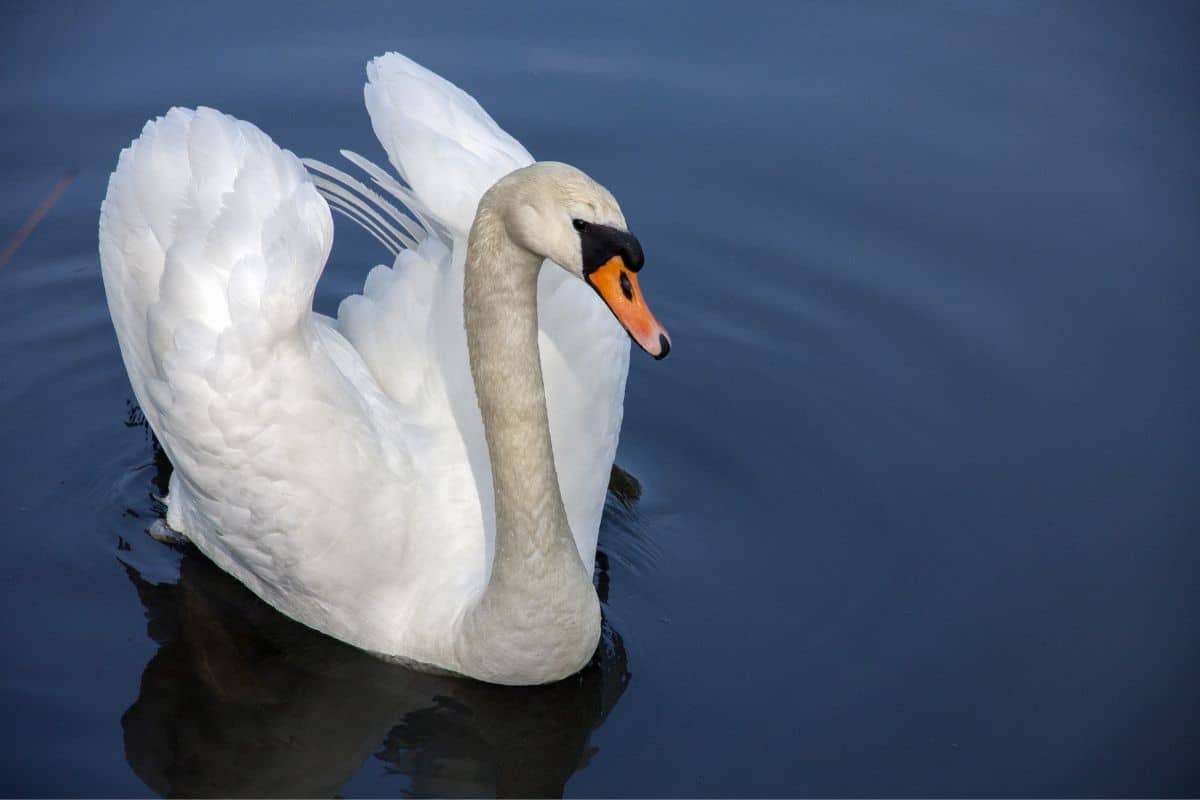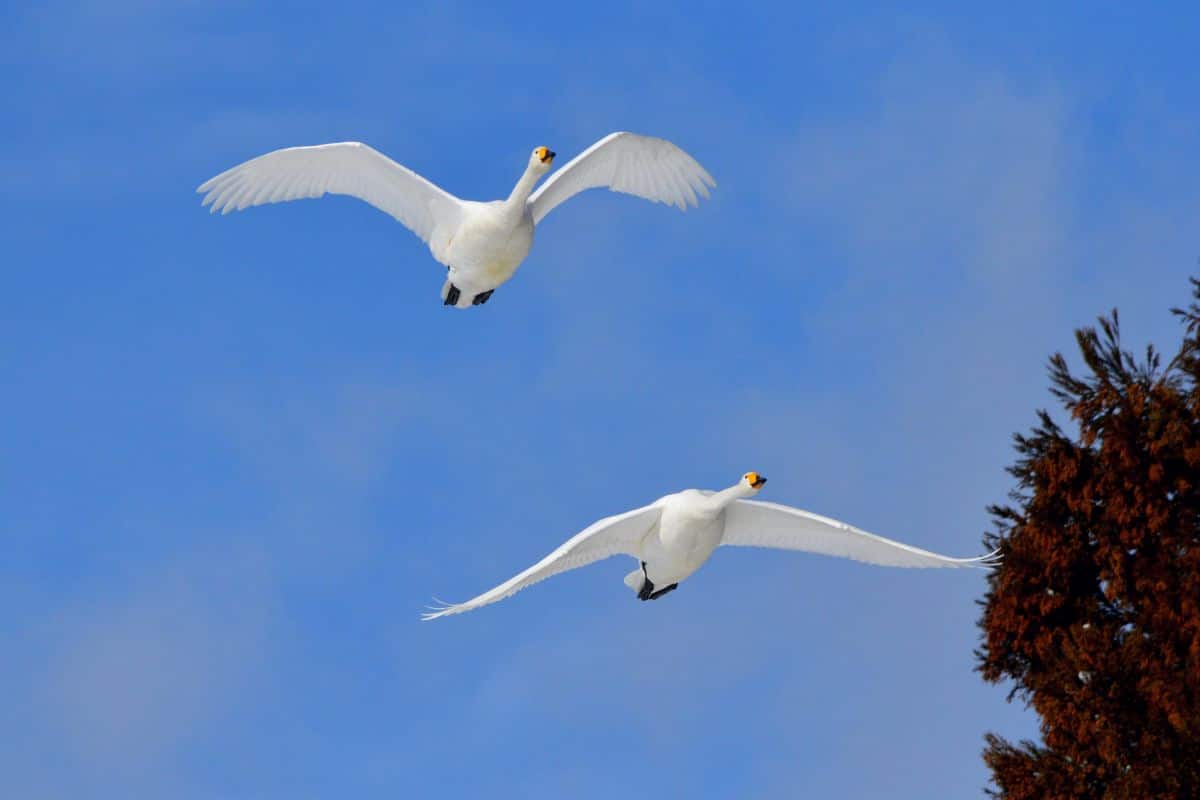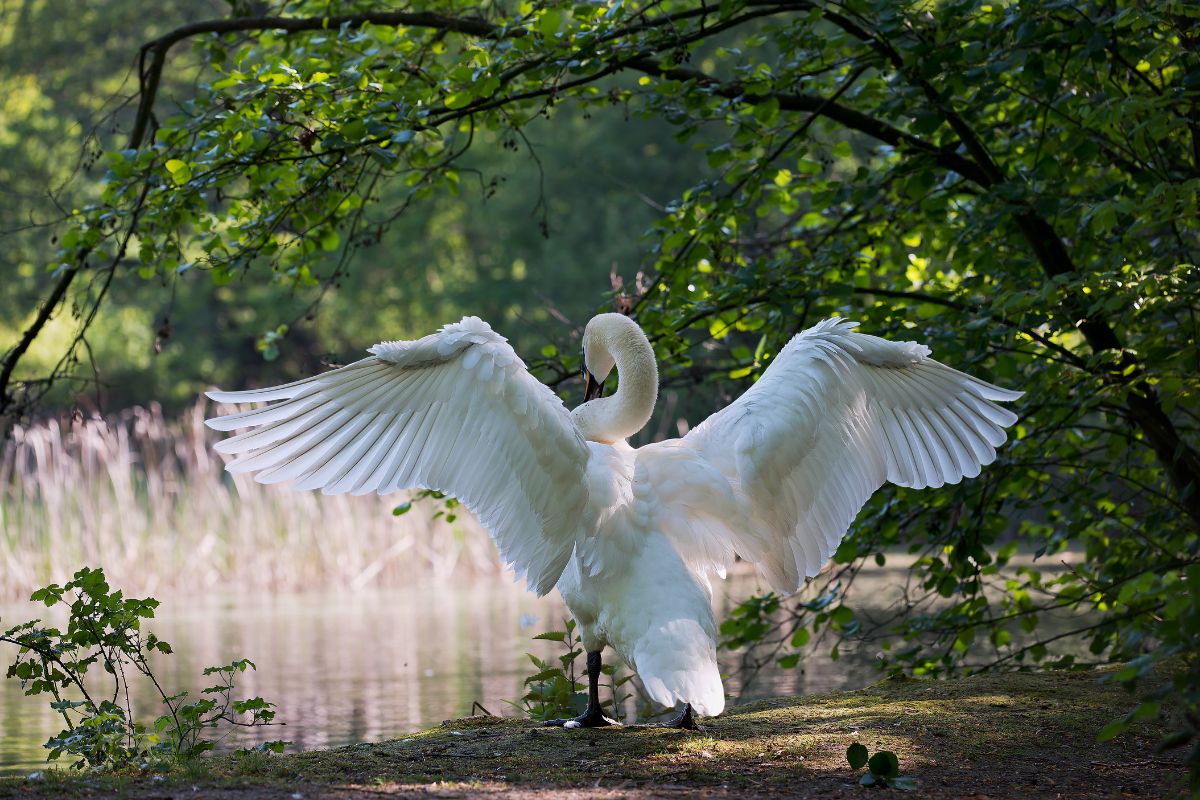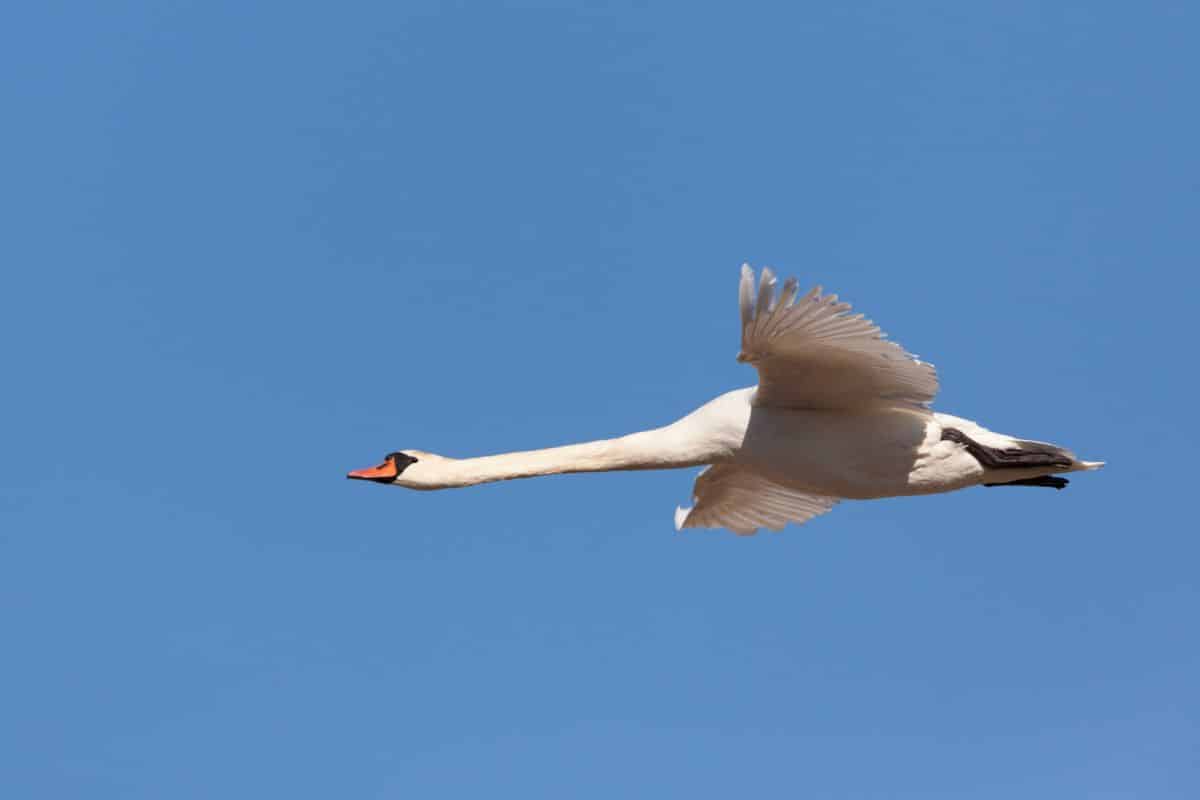Swans are revered for their grace and beauty. With significant figures in mythology and art, it can be hard to know what is true and what is fiction when it comes to swans.

Swans are large, water birds. It makes sense that they wouldn’t be able to fly. Yet, they are related to ducks and geese, which do fly. So, what is the truth? Can swans fly? Keep reading for the science expert’s answer.
Contents
Do Swans Fly?
Yes! Though there are differences in ability and occasions they fly, all swan species are capable of flight.
The biggest members of the waterfowl family, Anatidae, swans are among the largest and heaviest flying birds, measuring up to 64” with weights up to 26 pounds. Even with their size, swans are as graceful in the air as they are on the water. Some swans, like Mute swans, even use their wings as sails in behavior that resembles windsurfing.
How Swans Fly
In flight, swans glide regally and move through the air with slow wingbeats. On the water, swans swim with their necks in an S-curve. While flying, swans typically stretch their necks out straight.
Some swans, such as the Trumpeter Swan, exhibit behaviors that are often telltale signs they are getting ready to take off. Head-bobbing, increased activity, agitation, and vocalizations indicate they are prepared to move on. In the case of sudden danger or fright, they will usually not show these behaviors.
Statistics

Swans have an average flying speed of 20-30 miles per hour. Most swans fly between 2,000 and 4,000 feet over land, while some species can reach heights of 6,000 to 8,000 feet. Swans can fly thousands of kilometers a year depending on a specific species’ migration habits.
Bodies Designed for Flight
Many qualities that make swans such excellent swimmers also contribute to their impressive speeds and endurance in the air.
Swans have strong, hollow bones that help them move fast in the air or water. Rather than teeth and a heavy jaw, swans have an organ called a gizzard, which does all the grinding and chewing of their food at a fraction of the weight.
Their feathers are designed to provide flight control and friction in the air. With 25,000 feathers on average that grow in specific patterns called feather tracks, swans have excellent resistance against air.
A swan’s respiratory system allows them to breathe ten times faster than mammals, so they have the right amount of oxygen to keep their muscles functioning in the air.
Cygnets
Cygnets or young swans can typically fly around 12 weeks old or somewhere before 3 to 4 months after hatching, once their chest muscles and flight feathers are strong enough. They will begin with short practice flights with their parents.
When and Why Swans Fly

All swans are capable of flight, but not as swans migrate. Swans fly to relocate for warmer temperatures, food, and breeding.
Non-Migratory Flight
Some swans, like the black swan, don’t migrate but are nomadic. So, while they don’t travel long distances following favorable weather, they will move further inland or to another location in their general area for better weather or feeding conditions.
Migratory Flight
Migratory swans migrate during winter for warmer temperatures and then migrate back for summer. They can fly long distances, up to twelve hours a day, toward a better place to live, feed, and breed.
When flying in groups, swans fly in flocks in a diagonal line or V formation. In these aerodynamic patterns, the lead swan flying in front of the formation pushes through the air, guiding the swans behind them and making their flight easier. When the lead swan becomes tired, another takes its place.
Migrating flocks of swans can include mated pairs, juveniles, and single swans. Flocks of migrating Trumpeter swans are usually made up of small family groups of a few pairs of mated swans and they’re young, around 25 birds, while a flock of migrating Tundra swans can include about 100 birds.
Swans and Flight

Even though swans are large water birds, scientists agree they are designed for flight and for the advantages of flight, migration, and the ability to go wherever they need for optimal resources and conditions for reproduction and survival.
